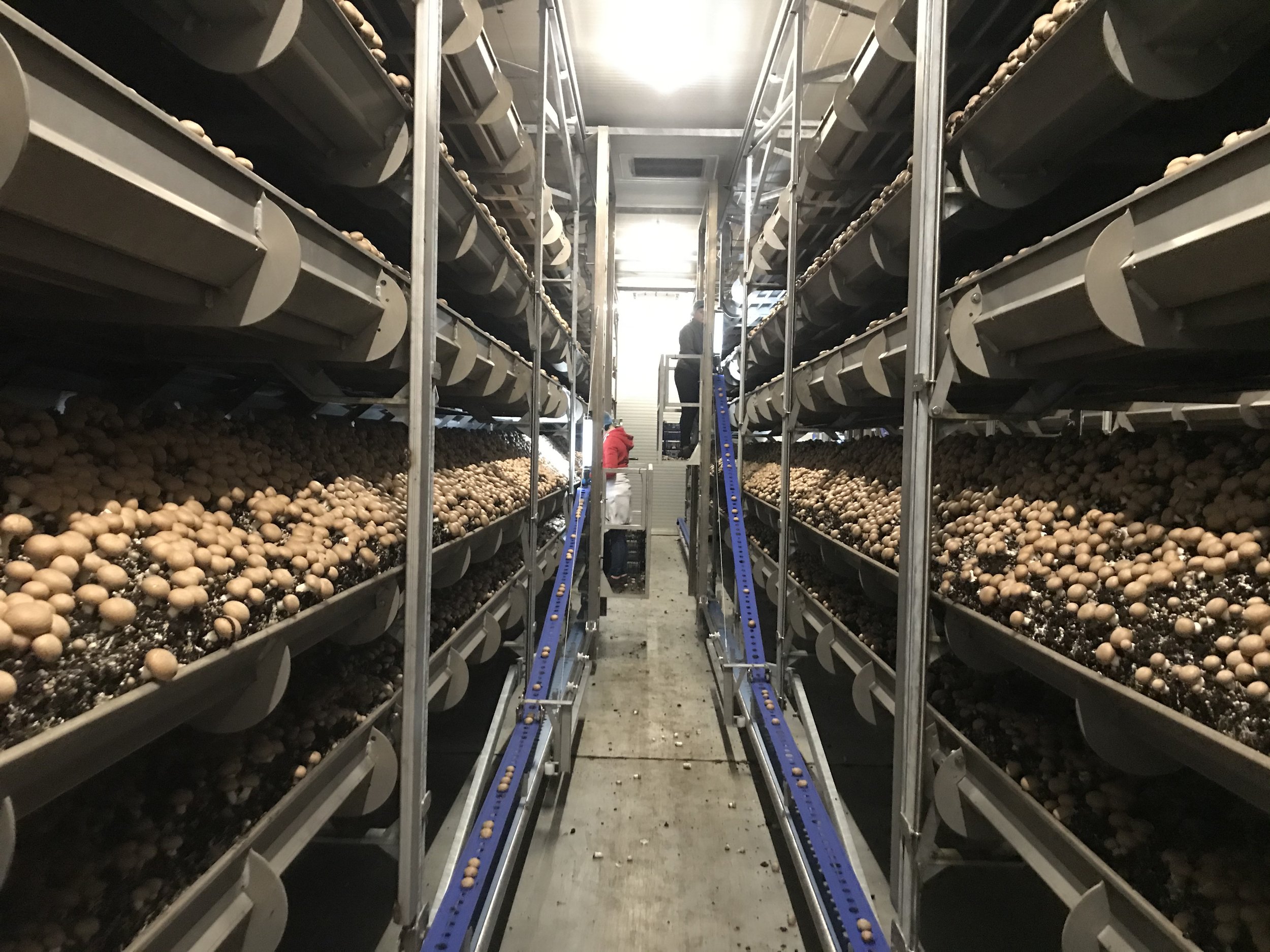GROWING THE FUTURE TOGETHER
The 2022 AMGA conference
By Dr Jenny Ekman
At the end of October, the mushroom industry will meet in Adelaide for the first industry conference in several years. With a diverse speaker program, the conference provides a unique opportunity to learn about new advances in research, farm practice and marketing initiatives, as well as offering great networking opportunities.
This year, the AMGA conference will host suppliers, growers, farm owners and well-respected national and international speakers.
Following farm tours on day one, day two of the conference (Thursday 27 October) is dedicated to
international speakers. A wide range of presentations will focus on topics critical to the ongoing sustainability of the industry, including harvest mechanisation, new variety development and alternative casing materials.
One of the great range of international guests are profiled below.
Picking the best from harvest practices
Mushrooms are already a technology-intense crop. More than any other, they rely on precise control of
substrate, climate, nutrition, and irrigation. Many aspects have been mechanised, with computer controlled compost production, bulk phase 3 compost, automatic casers and fillers and many other technological aids.
However, the most important part of cropping – harvest – is still entirely done by hand. Many growers were already struggling with rising labour costs before COVID-19.
In recent months, the difficult situation resulting from numerous unfilled positions has been exasperated by illness-derived labour shortages. Added to the major cost of labour to growers is now the almost daily worry of worker availability.
For more than 30 years engineers have been trying to develop a robotic mushroom harvester. This is no easy task. Mushrooms need to be picked gently, trimmed appropriately, and placed into grades according to size and shape. A firm touch or sharp edge can easily disfigure or bruise mushrooms. Furthermore, as mushrooms are not regularly spaced on the beds, picking single mushrooms from clustered groups poses another special challenge.
Initial robotic harvester designs had limited success. Silsoe Research Institute developed an early robotic harvester in 19931. A suction cap attached to each mushroom, which then twisted and lifted the mushroom. While it could locate 84% of mushroom targets, only 57% were picked successfully. Overlapped or closely packed mushrooms were the most difficult to pick.
Technology has come a long way since the 1990s, and so has the search for robotic mushroom harvesting. A quick Google search reveals at least 10 companies (and universities) involved in developing commercial harvest technology for mushroom farms.
Any such technology is inevitably going to be capital-intensive. A potentially less expensive approach is to develop ways to increase efficiency of human pickers. This may mean using single layer beds, or moveable and/or tilting trays.
One company working on both options is GTL Europe. The company was initially formed in 1994 by Jack Lemmen as a tiny start-up in a shed beside his parents’ house. In 2013 he merged with three companies: Geraedts, Thilot and Lemmen. This has given the larger group expertise in air handling and control, composting and growing equipment, and waste management.
GTL Europe is now a globally recognised company involved in all levels of mushroom cultivation. It offers solutions to compost producers and farms including construction design, climate control systems, machinery, and automation solutions.
Jack Lemmen will be presenting at the 2022 AMGA conference on some of the latest developments in automation on mushroom farms. According to Jack, “The tilting shelves system was just the beginning. It is really the starting point towards a fully integrated harvesting system. Technological developments such as robotics and artificial intelligence are creating an array of opportunities to further optimise the harvesting process.”
Huge improvements have been made in scanning, grading, and packing equipment for many fresh horticultural industries. Perhaps it is time for a great leap forward for mushrooms. Jack is certainly well qualified to give insight into what new technologies are becoming available, and potential benefits for the mushroom industry. It is certain to be a fascinating subject.
This is an excerpt for the MushroomLink Spring 2022 magazine, click here to read the full article and publication


